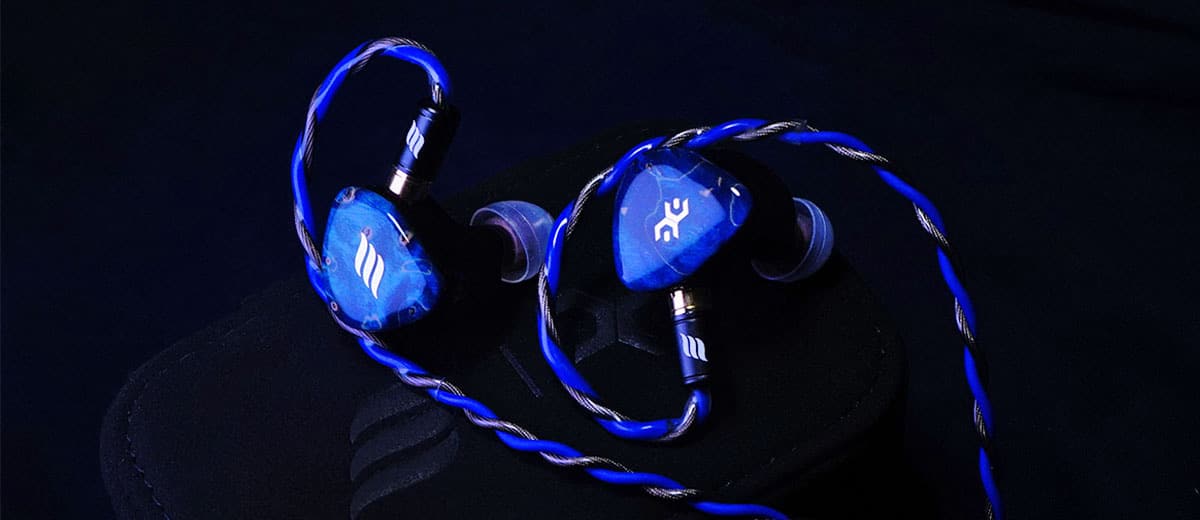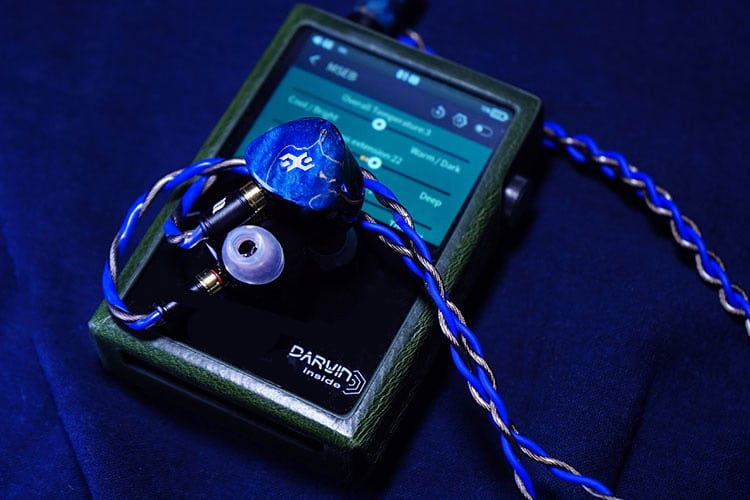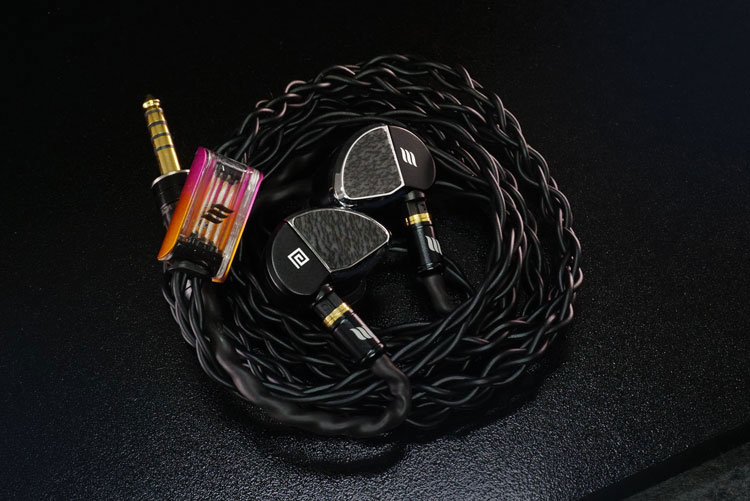Synergy
Efficiency
The Gaea can be very easily driven by lower-powered DAPs and dongles and this is one big merit. As the sensitivity is quite high when switching to higher gain you can notice the background noises from the mix and the amping circuitry of the gears you are plugging into.
It may sound more flattened when the output impedance of the source is high or when higher gain levels stress some of the frequencies and kills the air.
Pairings
Being quite natural in tone and sensitive to output power, the Gaea sounds great with various gears such as the recently reviewed FiiO M11S. This combo boosts the dynamics and infuses more color into the midrange frequencies that are not as normally as vibrant on the Gaea with other sources.
With the Shanling M6 ULTRA, the mid-bass sounds even denser and textured, and on low gain, it makes an expansive, dynamic, and well-articulated pairing that I could easily recommend to those who don’t like the vocal or upper mids to sound intrusive.
With the HiBy RS2 equipped with R2R technology, the midrange is more forgiving and sounds buttery smooth. I like it a lot with EDM that has offbeat, bouncy bass but when it comes to vocals, especially thicker or darker male voices it may sound overly euphonic.
Select Comparisons
Effect Audio Axiom
$1499
Technical
The design of the Axiom is highlighted by an inter-switchable MU System Module that supports not just MMCX and 2-pin connections, but different cross-over designs or tuning approaches.
Inside it fits an oversized 12mm magnesium dynamic driver with LCP suspension that handles from bass to midrange frequencies, and the treble is handled by dual Knowles balanced armature with a crossover point at 4,800Hz.
The impedance is 32Ω on the Axiom and sensitivity is measured at 112dB SPL which is fairly sensitive. In Gaea’s case, the impedance is only 10Ω and it is easier to drive the Gaea to sound detailed and dynamic than the Axiom in practice.
Design
The Axiom has a modern and lavish outlook; the faceplate embeds a “HeTian” jade insert and the Aluminum alloy housing fits a titanium nozzle. This is probably why the Axiom feels quite hefty compared to the Gaea which is made from a mix of wood and resins.
The Axiom has quite an uncommon appearance and doesn’t come with a cable, while the Gaea comes in a matched package with the same color elements applied throughout different parts of the design. Probably personal preference will determine which design looks better here.
Performance
The Axiom is a characterized approach where the dynamic driver in the design dominates the output. It is obviously more power-hungry than the Gaea and would need a lot more swing and more care to pick the right matching gear.
No matter what cables you pair with the Gaea it maintains the signature boomy, a thickened bassline that is very fun if you listen to club music and strong trap beats.
The strong coloring somehow feels off-tracked looking at the IEM’s appearance and positioning. The Gaea feels like a much more appropriate, “HiFi” approach that sounds way more neutral.
Comparing the actual technicalities the Gaea has stronger resolving power, control in both ends, and airy details in the upper mids and treble. In practice, it is much easier to power the Gaea, unlike the Axiom which relies much more on the output power and signature to achieve better balance.
Shanling ME800
$779
Technical
I have picked the Shanling ME800 which is a very competitive hybrid IEM with a 4BA, 2DD configuration, and double the DD count from what we are seeing on the Gaea.
The ME800 comes with an octa-core Furukawa single crystal copper cable and switchable connectors, which is a great match with the expressive and intense vocal performance on the earphone units.
At 16Ω, 112dB sensitivity the ME800 is almost as sensitive that could be easily driven off any device. However, in practice, it would require a bit more power than the Gaea to have the dynamic drivers driven to their full potential.
Design
The ME800 has a glittery faceplate and a more generic universal shape but on the side, you will find toggle switches that allow users to experience four tuning combinations.
Moreover, the cable supports hot swapping so users can change between 4.4mm, 2.5mm, and 3.5mm plugs in just a blink of an eye.
The Gaea, comparatively, has taken more effort in matching the theme cable and the body unit, displaying its starry night palette even on the cable cores. I would say the build quality is marginally better on the Gaea for everything, and at its tier, it is one of the most fun-colored yet elegantly designed IEMs right now.
Performance
The ME800 has outstanding bass density and agility in tuning with its toggle switches, which could also instantly bring up the transient tones for a stronger sense of resolution.
The tuning leans more to the bass on the ME800 and it can take up higher output power before the treble gets peaky. It also sounds denser, fuller in the mid-bass region, and deeper down the bass compared to the Gaea which is more balanced and has a more agglomerate vocal image.
I find the ME800 very enjoyable for genres like R&B, Deep House, etc., which have jazz/funk-derived harmonies and a stronger bassline. The Gaea is a better all-rounder that sounds great with every genre being more neutrally tuned and able to extract details from different frequency segments.
As for staging performance, Gaea renders the headroom more natural and does not push forward the lower vocal frequencies as ME800 does. It sounds more open up and transparent, allowing more of the overtones to be effortlessly delivered without bringing out any harshness and preserving the innate character of the vocalist.
Using Plastic Love sung by Maryia Takeuchi to test, the bass impact on the ME800 is bolder and more impactful but the crossover region feels more smeared up and spatially clumped together; Gaea is much cleaner around 700Hz and is less aggressive in the treble at the same time.
In short, the Gaea is more swiftly articulated and tonally balanced. It can interpret the source in an objective manner and it has better synergy with dongles and small DAPs to sound silky smooth and free from harshness.
The ME800 is more M-shaped, dense, and warmly textured, it also has more shimmer but at the expense of feeling more altered and less refined with the vocal image.
Our Verdict
The Effect Audio Gaea has an artistic design that seamlessly fuses together the tuning essences and craftsmanship of the two companies.
The timbre is organic and delicate, and excellent balance and cohesion are achieved within the frequency spectrum output. The ultra-high sensitivity allows it to be very easily driven by a portable source, giving it higher versatility in pairing than most other IEMs.
I consider this a very successful collaboration. One that offers a mature tuning with great synergy between the cable and the IEM. You get an outstanding performance on smaller outputs and decent distortion control also.
Effect Audio Gaea Technical Specifications
- 5 Drivers Hybrid In Ear Monitor (1 Dynamic Driver & 4 Balanced Armatures)
- 4-Ways Crossover system (1 DD Low, 1 BA Low-Mid, 1 BA Mid-High, 2 BA High)
- DiVe Pass II Dual Ventilation Technology*
- Frequency Response: 20Hz to 20KHz
- Impedance: 10Ω @ 1khz
- Sensitivity: 102db/100mV @ 1khz
- THD ≤ 1%





